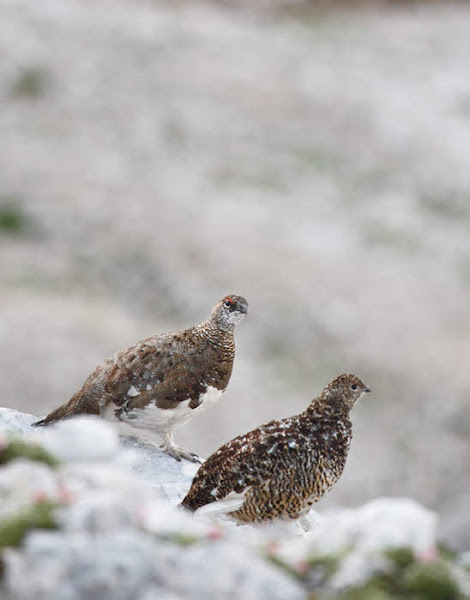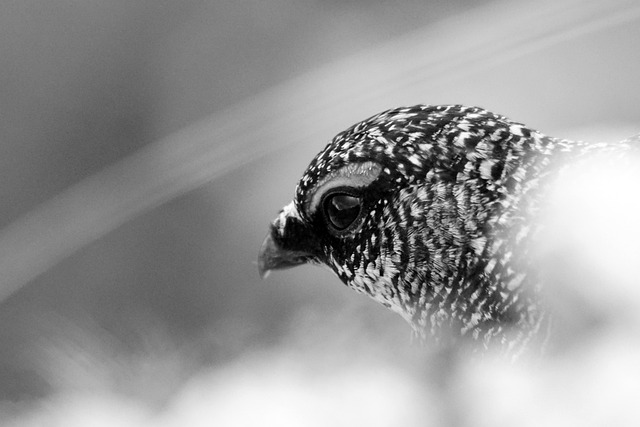
Rock ptarmigan (Lagopus muta)
| Size |
|
|
Weight |
|
|
Nutrition |
|
|
Habitat |
|
|
|
|
| Kingdom |
|
| Phylum |
|
| Class |
|
| Order |
|
| Family |
|
| Genus |
|
| Species |
|
There is not much difference in colour between the male and female. In winter, the male has a dark stripe running from the bill over both eyes. The female has no such stripe. In summer, the ptarmigan is a grayish-brown and the wings and underside of the belly are white throughout the year. Above the eyes is a red skin fold. The beak and claws are black.
Although classified as a bird, the white-throated owl does not fly much. It only flies short distances. It lives above the forest line on rocky slopes, in high mountain meadows and in the heathland belt in the Julian Alps, the Kamnik-Savinja Alps and the Karavanke Mountains. The Ptarmigan is considered a protected species
The white-tailed ptarmigan feeds mainly on fruits, seeds, shoots and leaves. In summer, its menu also includes animal food, mainly insects and smaller animals.
The Ptarmigan mates in April and May and nests in mid-June. The female lays 6 to 15 eggs in a shallow burrow, which take about 24 days to hatch. During this time, the male stays nearby, alerts to danger, and uses its conspicuous whiteness to drive predators away from the nest.

DID YOU KNOW?
- A baby bird covered in fluff is also called a "kebček".
- The white-headed rock ptarmigan digs tunnels under the snow to hide from the winter cold. This interesting bird is often disturbed by people because of its winter activities, especially around Velo Polje and Hribarice and on the Mangart saddle.
Thank you.

